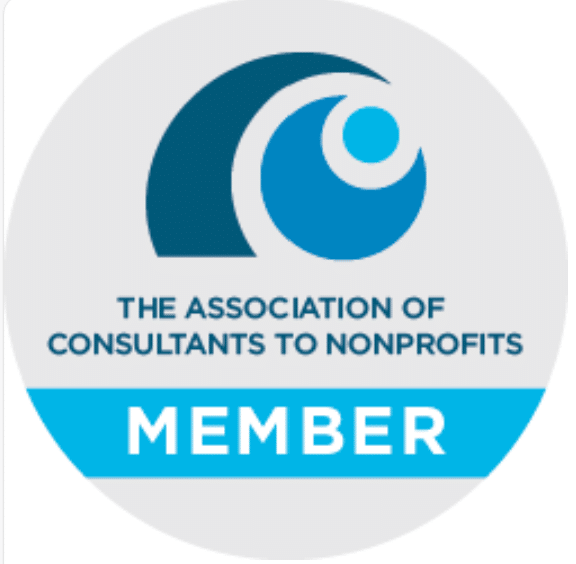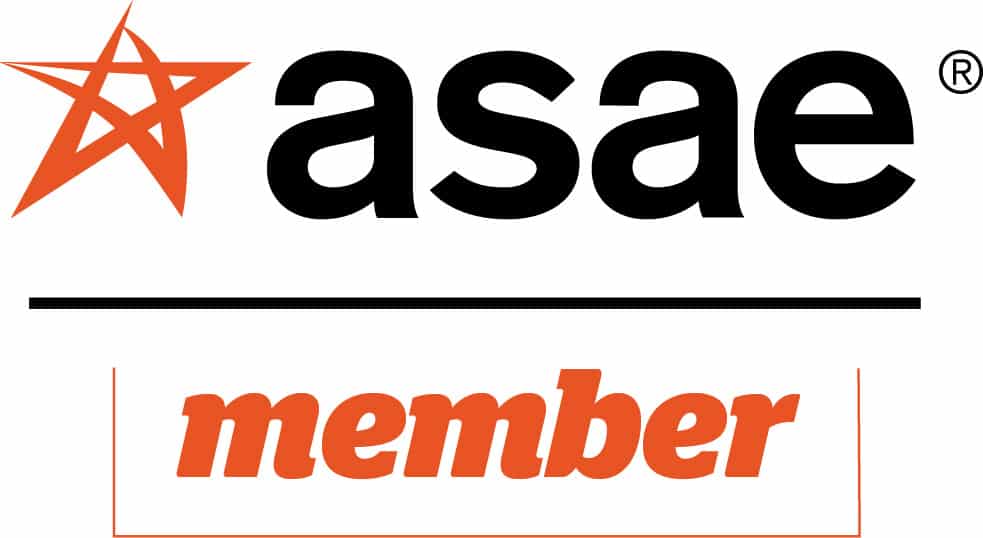Headwinds for Association Success
We heard it again and again from our clients at leading membership organizations. It took more work every year to reach association success.
Some knew the market was shifting around them. Some had thought they were immune. Instead, all felt the pressure on their numbers, which told them that the way they had always done things was not working. When we think of headwinds, we think of slow and halting progress against forces beyond our control. Today, membership organizations’ headwinds come in many forms: increasing consumer demands to get anything they want “on-demand,” considerable shifts in the data economy and everything it touches, and pressure from every angle on the affinity marketing model.
These headwinds have been building for some time. Unfortunately, the effects are rippling through the association world – putting downward pressure on membership, lowering advertising, royalty, and other revenue sources, and impacting the dashboard metrics of most organizations. Faced with these inexorable realities, organizations have chosen various responses, from defensive and incremental to innovative and bold.
These headwinds will not abate. Laggard organizations have fallen further behind, and many will continue to do so. Moreover, the accelerating rate of change will prove too much for some large, long-standing organizations that need to be faster to adapt, and they will be forced to merge or find other ways to exit the market.
Meanwhile, winners who embraced these changes continue to win, sticking to their association success formulas while adapting to the new realities.
Upended Expectations: The On-Demand Economy
Consumers expect immediate and easy access to whatever content, product, and services they want. Moreover, they expect access to be free or part of a low-cost, subscription-based service that offers highly unique and relevant value. Examples of hugely successful on-demand-type services include discounts, travel, insurance, content, and others.
In short, the paradigm of membership, in general, is less appealing because it is less well-aligned with the daily experiences and ensuing preferences of today’s consumers, especially those who are younger. This is not to say membership is dead. However, the bar for thriving membership is higher. Organizations must come to grips with the increased competition and consumer loyalty around even their most tried and true core offerings, including their mission-based work.
Options on causes to support are merely one example of the “on-demand” economy that has upended consumer expectations across the spectrum of modern life, including the core business of membership organizations. The gap between winners and losers will be measured by their ability to adapt to these new realities.

On-demand discounts. Honey has been downloaded over 5M times and can automatically apply codes from more than 21,000 stores during check-out. Of those, 67% are Millennials, and users have saved $170M+ this year.
Honey earns a small commission on every coupon code used. The secret to Honey’s success is fulfilling consumers’ need for confidence that they’re getting the best price before completing their transaction. The resulting increase in completed sales is a huge benefit to retailers.
On-demand insurance. Slice provides on-demand insurance for home-sharing. The homeowner can buy customized levels of coverage just for the term the home will be rented. Other providers offer “microinsurance” for high-value items like phones and computers.
These new insurance companies are targeting Millennials and have taken pains to simplify and streamline the application process so coverage can be purchased in minutes through a mobile device.

Data Is THe New Oil
The most tectonic shift facing membership organizations is the meteoric rise of the new data economy. Some say that “data is the new oil.” It is the fuel that powers nearly every aspect of the world we now live in. However, it is also a vast, complex, largely untapped, highly fragmented, and impossible-to-control resource for which the world has an insatiable appetite. New data sources come online daily, and a multi-layered industry to extract, refine, and distribute data has grown exponentially.
In the past, organizations could capitalize on their exclusive access to their members and prospects to drive their recruitment efforts, create communication channels to drive advertising revenue, and monetize their lists through royalty agreements. In essence, as “owners” of an exclusive and valuable audience, membership organizations were in the driver’s seat in offering access to them, giving birth to an entire industry in affinity marketing.
This role as a privileged gatekeeper has been progressively eclipsed by the realities of today’s data economy. The sheer wealth of consumer data that is widely available allows marketers to target the consumers they want in many ways. These marketers, who in the past would have eagerly signed up for royalty agreements for access to a member list, can now find, understand, and target those same consumers and do so more cost-effectively.
Faced with the inevitable reality of these challenges, organizations have taken a variety of new directions, ranging from incremental and defensive to radical and innovative.
Outdated Affinity Models
Many major insurance carriers that were once mainstays of the affinity industry have exited the industry or significantly reduced their involvement. Seeking to streamline their operations, minimize their regulatory exposure, and maximize their marketing ROI, they have reorganized and re-invested in ways that have left their affinity relationships behind, often after decades in business together.
A few years ago, the affinity market represented $60B in annual premiums. Insurers are staying on this outsized opportunity but are increasingly abandoning the model, which formerly provided great value in unique access to marketable groups of strong buyers. As the calculus has changed, so have insurers’ approaches to the market and their affinity partnerships.
Outpaced By Insurgents
While membership organizations and their marketing partners have been questioning their models, insurgent organizations have been reinventing them without them. For-profit start-ups that have mastered the new data and digital realities have quickly stolen significant shares from larger membership organizations that cannot yet compete on this new playing field.
At the same time, smaller, more nimble, not-for-profits have successfully undermined larger “umbrella” organizations through a relentless focus on understanding their key segments and delivering them strong, unique value.

Doximity, a for-profit, online startup focused on physicians, raised $85 million in venture funding and amassed over one million physician members in six years. Their membership now includes 70% of all US physicians, 90% of fourth-year medical students, and nearly half of all nurse practitioners and PAs.
Their revenue model, which has been cash-flow positive for some time, is based on free membership and no advertising. They monetize the membership by selling access to recruiters.
Member value is delivered through simple but powerful digital tools doctors need and use daily and high-profile partnerships, including US News and World Report’s Hospital Rankings.
One key to their meteoric growth is their mastery of the market data, including data on every US physician before becoming a member.
Obsolete Royalty Models
As the royalty model erodes, organizations of all sizes are forced to rethink their product portfolios. Once reliable passive income sources, their product suites have been devalued by the exit of their traditional royalty partners and an absence of new partners interested in the “standard” affinity marketing arrangement.
This leaves many holding products and services that do not contribute much revenue and that members do not value. Retrenchment takes the form of drastic pruning, leaving only “signature” offerings uniquely aligned with their mission and having commercially competitive advantages.
In other cases, the model of “products as revenue” has given way to “products as member value,” which leads to new, highly flexible commercial arrangements to secure products members love first and foremost, sometimes with minimal or even no revenue attached.
Several prominent associations have dramatically reduced their product portfolio. They have eliminated products with low engagement and weak member value. Instead, they have consolidated their royalty streams around high-value, highly unique products with high revenue—for example, profession-specific insurance products.
Instead of their old, unproductive royalty relationships, they have launched new marketing relationships akin to sponsorships. Providers with high-value products for members can promote them through a straightforward marketing relationship — exclusive access to highly responsive marketing channels for a negotiated fee.
The primary driver is delivering member value to the end of acquisition and renewal, with revenue as a secondary consideration. This model is far more comfortable and attractive to most modern marketers, which opens up a whole new range of potential relationships and offerings that would have needed to be in reach in a traditional royalty model.
The bar for association success is higher and organizations must come to grips with the increased competition and consumer loyalty around even their most tried and true core offerings.
New Formulas for Association Success
In response to the unavoidable reality of these challenges, organizations have adopted a range of approaches, spanning from cautious and reactive measures to bold and inventive strategies, all in pursuit of association success.
Seeking Growth Globally
Organizations that have reached saturation in their markets or faced insurmountable competitive pressures in the US have turned to international markets for new audiences, including members and subscribers, buyers, event attendees, etc. Membership models in these countries are often less mature, and competition is less intense than at home.
In addition, US-based organizations often have considerable advantages in their intellectual property and access to American networks and resources. Far from a panacea, buying power and business methods disparities require adaptability and will. Still, strategically patient and determined organizations have successfully offset pressures at home by advancing into untapped markets abroad.

Like many organizations, one prominent engineering association saw its value proposition erode due to the confluence of market forces, particularly pressure on its publishing business.
However, unlike many organizations, they recognized and reacted to the trends early, in their case, by shifting focus to international markets in search of growth. As early as 1995, they began investing in international marketing operations, leading with publishing, technical standards, and events, which drove membership.
Taking a long view allowed them to enjoy sustained and diversified growth. Fully 1/3 of all of their business, including membership, is international, where they have seen a predominance of their development while the US market has mainly remained saturated and flat.
Growth THrough Acquisitions
Some organizations with money to invest but need more internal resources to develop critical new capabilities have bought them instead. These organizations seek out and acquire capabilities that complement the mission and elevate the organization’s position but would be impossible or impractical to build themselves.
Not for the faint of heart, acquisition and integration are complex and fraught with risk. However, wisely done, small purchases of niche players with unique assets or intellectual property can transform an organization’s profile and give it a real competitive advantage by cementing its hold on uniquely valuable spaces in the market, which often provide new sources of revenue and relationships.

SAE International has made a series of acquisitions of for-profit companies that bring unique capabilities to their industry offerings, from cybersecurity to quality control to training and certification.
These strategic acquisitions allowed them to quickly build an entirely new, industry-facing arm of their enterprise, providing new revenue streams and competitive advantage alongside, but independent of, its membership.
As the individual membership model becomes less and less fruitful, some organizations have opened a new avenue of membership for employers. Far from the “group discount” offered in the past, the new institutional membership includes individual membership for employees but layers on new B2B benefits uniquely available from the association and only offered to group members.
Intelligent program design offers clear financial benefits to the employer, with calculable ROI and intangible benefits that are important to the executives who decide to buy. In addition, successful programs can more than offset declines in individual membership and potentially foretell a future in which group memberships surpass individual memberships in importance.

AMA, recognizing that nearly half of US physicians are now employees of large health systems, created an entirely new group membership for large health systems, loaded with benefits for the group and its executives. These benefits and discounted memberships for all their physicians were easy for executives to justify. Member growth will surpass individual member growth this year.
The New Look of Association Success
One of the most important lessons the market teaches us is that organizations that have thrived in the face of often tectonic changes responded boldly and did so a long time ago —even decades ago. The pace of change is only accelerating, not only in velocity but also in the sheer number of fundamental shifts and unforeseen threats facing every organization, even the most venerable and entrenched.
It is often not one new development that imperils a business model but rather a nexus of powerful but fragmented changes that overwhelm old ways of doing business and create entry points for a potential swarm of new competitors.
From our market survey, it is clear that the pressures associations have felt are neither transitory nor entirely within their control. The pace of change will increase.
The unexpected should be expected. And the fundamental forces at play go deeper than messaging and positioning.
Instead, they encroach upon the elements of the business model itself, which entirely revolves around an organization’s ability to build and monetize an audience, that is, a membership.
Headwinds mean challenges and opportunities for association success and for those who can tackle them while others struggle to stay afloat. The most successful associations have seized the moment to consider their options and courageously turn their threats into opportunities.
For more on association success strategies, see: 10 Ways to Get Ready for the Future of Membership Now”and Why Waiting for ‘Normal’ is a Bad Strategy.













